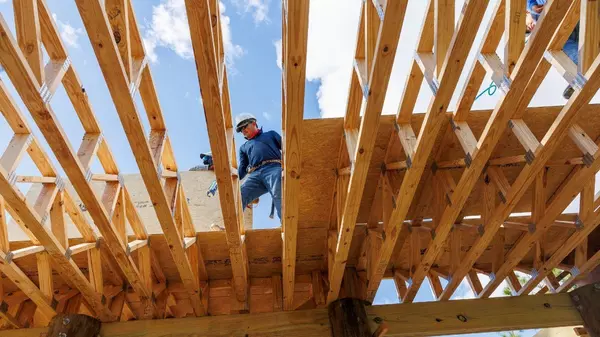New Hampshire is Struggling in Affordability and Homebuilding: Can Governor Ayotte Keep Her Promises?
New Hampshire’s housing market is running hot—and running short on homes.
Realtor.com® State-by-State Housing Report Card gave the Granite State a C-, underscoring a widening gap between supply and demand. The report, part of the Let America Build campaign, evaluates how each state balances affordability and construction activity.
But this is a national problem. In fact, President Donald Trump recently put pressure on homebuilders to increase construction nationwide, given the issues with construction in the country. In a post on his Truth Social platform in early October, he accused major builders of hoarding lots to prop up prices—likening them to OPEC, which restricts oil output to maintain high prices.
“They’re my friends ... but now, they can get Financing, and they have to start building Homes. They’re sitting on 2 Million empty lots, A RECORD,” Trump wrote. He urged Fannie Mae and Freddie Mac to intervene and “get Big Homebuilders going” to “restore the American Dream.”
For New Hampshire, the challenge is clear: strong demand, limited buildable land, and restrictive local zoning have combined to push home prices higher than most residents can afford. So what can local government do next to fix the problem?
New Hampshire’s “C-” grade explained
Realtor.com analysis gave New Hampshire a total score of 42.2, placing it among the lower-performing states in the nation. The state’s median listing price reached $572,784 in 2024, supported by a median household income of $94,929—one of the highest in the country but still not enough to offset steep housing costs. The Realtors Affordability Score was just 0.57, showing that fewer than half of available listings are within reach for typical earners.
New Hampshire’s share of national housing permits was just 0.3% in 2024, while it accounts for about 0.4% of the U.S. population. That gives the state a permit-to-population ratio of roughly 0.75, signaling that it’s underbuilding relative to demand. The new construction premium—the difference between new and existing home prices—was 38.7%, showing that new homes remain significantly more expensive than older ones.
Realtor.com economists say in the report that this imbalance between income and construction is a familiar pattern across the Northeast, where strong economies collide with strict zoning laws and limited land availability. New Hampshire’s low building rate makes it especially vulnerable to affordability declines, even as new residents continue to arrive from higher-cost states like Massachusetts.
How New Hampshire compares to the Northeast
Across the country, new construction is helping stabilize prices, but the benefits are uneven. According to the Realtor.com New Construction Insights, the median new-home price nationwide held steady at $450,797, while resale prices rose 2.4%. That narrowed the national new construction premium to 7.8%—the lowest on record.
The Northeast, however, remains the most inventory-constrained region in the country. Realtor.com’s analysis found that the region has the lowest share of new construction listings and the highest price gap between new and existing homes. With just 17% of American households, the Northeast’s limited supply continues to drive up costs.
For New Hampshire, those constraints are compounded by its high desirability as a migration destination. Cities like Manchester, Nashua, and Portsmouth are seeing steady demand but little relief in terms of new inventory.
“America is short more than 4.7 million homes, and every new home built helps close that gap while fueling local economies," says Shannon McGahn, executive vice president and chief advocacy officer at the National Association of Realtors®.
"NAR research shows that the U.S. has faced a persistent housing shortage for more than a decade, driving up prices and limiting options for buyers. Expanding housing supply creates jobs, supports small businesses, and affords families the opportunity to build generational wealth.”
Governor Ayotte’s housing reforms take shape
Governor Kelly Ayotte made housing a cornerstone of her campaign and followed through with a slate of bipartisan bills in 2025 aimed at loosening local zoning restrictions and speeding up the construction process. Her administration’s reforms are among the most ambitious in the Northeast, tackling barriers to both single-family and multi-family development.
Among the key measures signed into law:
- House Bill 577 allows property owners to construct detached accessory dwelling units (ADUs), expanding on earlier laws that permitted only attached units.
- House Bill 631 requires municipalities to allow multi-family residential development in certain commercial zones, opening new pathways for mixed-use projects.
- House Bill 2, part of the state budget, sets a 60-day timeline for state agencies to complete housing-related permit reviews.
- Senate Bill 282 and Senate Bill 284 reform safety and parking requirements, reducing costs for builders and homeowners alike.
“These changes are about helping New Hampshire families and workers stay in the communities they love,” Ayotte said when signing the package. “We’re removing barriers that for too long have kept people out of homeownership and kept our economy from growing.”
Housing advocates say the new laws could transform the state’s long-term outlook if localities embrace them. By legalizing more ADUs, speeding up permitting, and limiting parking mandates, the reforms are expected to encourage higher-density development in both urban and suburban areas.
This article was produced with editorial input from Dina Sartore-Bodo and Gabriella Iannetta.
Categories
Recent Posts










GET MORE INFORMATION

